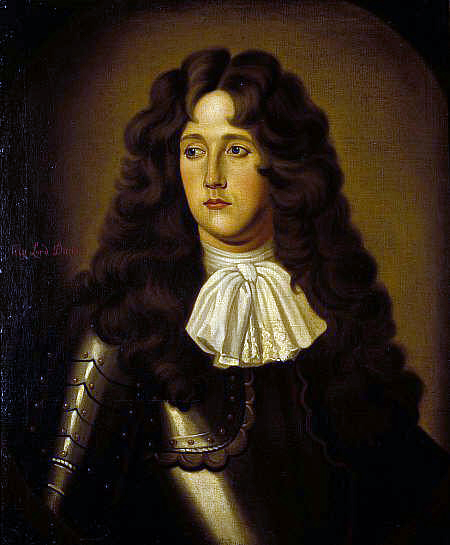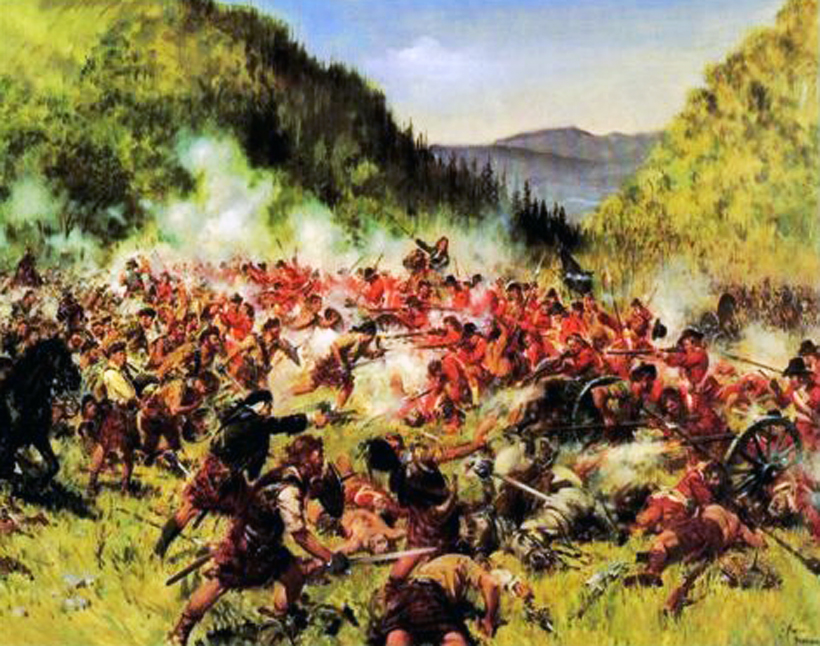The Battle of Killiecrankieby Tom Doran Though there were a seemingly endless series of battles, skirmishes and raids in Scotland or just over the border in its long history, one stands out for being almost typically “Scottish”, or rather in this instance, a fine example of a form of attack known uniquely as the Highland Charge. The year is 1689 – William of Orange was offered the crown of the king of England (and of Scotland) – and had come over in force as the Jacobite supporters of the now deposed Stuart King James VII-II frowned. Scotland was divided in their loyalties – Highland Catholics and Presbyterians tended to support their “king over the water” - while many lowland families mostly were adherents to the new King, who the year before came over from the Netherlands. The real bone of contention is that it was determined that Scotland publicly state their loyalty in pledge to William – many recoiled at this demand from the English parliament (and their own people in part). They had claimed that James had in fact abdicated when he fled the country after the intercession of the Dutchman. Many did not agree with that assessment. John Graham of Claverhouse (Viscount Dundee) thought this all wrong – and also believed there were dangerous forces set against him in Edinburgh where the loyalty pledge was to take place. He decided not to attend, and when the crown was offered to William and Mary (herself a Stuart), he set himself in arms against them – raising the standard of James VII-II. Graham, a lowlander, headed north to hook up with Lochiel and his Clan Cameron. Graham was a complicated man in some ways – a lowlander, Tory, and Episcopalian. For years he lead forces against Presbyterian Conventioneers – earning the name “Bloody Clavers” - though there seems to be some doubt that he was as brutal as the times themselves might have warranted or supposed. That he was fearsome, capable and determined however, no one doubts.  The painting is of John Graham of Claverhouse, 1st Viscount Dundee. also known as Bonnie Dundee Highlanders called him Dark John of the Battles, and followed him to fight the forces sent against him led by General MacKay who led an army of approximately 4,000 men – Highlanders and Low. Graham, a much more resourceful captain of men, managed to quickly maneuver his mainly Highland army (some 300 or more Irish was with this 3,000 man plus war party) away from MacKay while searching for the perfect ground for battle – fully aware of how to use the wild forces at this disposal. Finally, in July, they came to a place known as Killiecrankie Pass. Dundee's army took the high-ground, waiting for the command to attack. Meanwhile MacKay's forces started firing at them from a distance, doing little but to seriously annoy Claverhouse's forces. Waiting till the sun was just right, Dundee let his forces down on the government forces. The Highlanders dropped their belted plaids, and charged. They swept down the sloping hillside, unstoppable, screaming and half-naked. They let loose a volley, dropped there guns, drew their broadswords (and Claymores – used in numbers perhaps for the last time in a major conflict) and descended on their foe like an unstoppable force of nature. They were. They crashed into the enemy like a hurricane, killing thousands and utterly routing the forces of Mackay. It was quick and awful – and a mind-numbing victory for the Jacobite cause. However, the number of Highlanders killed was nearly 600. A huge portion – far less than the enemy to be sure, but a terrible blow nevertheless. A much worse blow still was the death of the man who formed and commanded this army – Dundee himself was shot out of his saddle during the battle – some saying he vanished in a swirl of mist and was never seen alive again. He was however found and taken off the field, mortally wounded from a bullet wound, and he died days later. The leadership of the Highland army went to someone not nearly qualified (or liked, as Lochiel himself felt snubbed and left with many of his Camerons) and they never regained the momentum, even in an absolute victory – one that belonged to Dundee, and had he lived, would and could have have capitalized on. The cause of James VI-II, while not dead for the moment, seemed doomed by the loss of their best Captain, and on the fighting fields of Ireland one year later, the Stuart reign came to an end. One aspect of the battle that changed military policy (though slowly) and equipment needs, was the use of the plug bayonet. After shots were fired, the only way to attach the bayonet for close-in combat, was to stick it in the barrel of the gun. Thusly used as an individual weapon (as opposed to in-concert use with fellow soldiers in the line), it was no match for the ferocity of a “blood-up” Highlander wielding a claymore or broadsword. After this, bayonets were attached separately – not in the barrel – leaving guns open to being used either way – to shoot or stab without wasting time or incapacitating their own weapons. It took over 50 years, but tactics for the use of the bayonet in unison came to fruition in the disastrous battle of Culloden moor. |
